So when did we
start chewing gum?
-

Gum was born
in Mexico.The historical record states that the ancient Maya chewed on chicle, the solidified sap of the sapodilla tree.
The first person to process chicle was the American Thomas Adams, who had originally tried to formulate the sap into something suitable for use in automotive tires.But the result was lacking in elasticity and failed to cure properly and Adams was going to throw this away into the river; he instead turned it into a gum for chewing.
During the time, pharmacies sold chewing gums made of paraffin wax. John Colgan came up with the idea of adding spices, sugar and other additives to chicle, giving birth to the chewing gum we know today. Industrial production of chewing gum began in the early 1890s when William Wrigley established his company and began selling the product all across the United States.
His sales strategy was to reinvest most of his profits back into advertising, making ‘Wrigley's Chewing Gum’ a household name among American consumers. The strategy worked, and to this day Wrigley's is a major chewing gum manufacturer. Meanwhile, prior to World War II, chewing gum was primarily produced only in the United States.
American GIs introduced the gum to Europe and various countries around the world during the war. They chewed a lot of gum during the war; each soldier is thought to have chewed around 3,000 sticks per year. Even today, American soldiers chew up to five times more gum than the average person. Gum was introduced to Korea by US soldiers as well, who brought it with their rations into the Korean War.
What is
xylitol?
-
Xylitol is a natural sweetener extracted from trees such as birch, and was first discovered in the 1890s. Research on xylitol began in earnest in the search for a substitute for sugar, which was in short supply as World War II raged on. It was first used for diabetics, and then in dentistry in the 1970s during which it was certified as a sweetener that helps to prevent tooth decay.
While xylitol is generated inside the human body as an intermediate product of glucose metabolism, it is found in large amounts primarily in plants. Extracted mainly from Finnish birch trees, xylitol is referred to commonly as ‘birch sugar’ and has a sweetness similar to that of sugar. While glucose (sugar) is a six-carbon sugar, xylitol has a unique five-carbon structure. The extraction process involves splitting birch into small pieces and boiling in water. The polysaccharide xylan is decomposed into xylose, and this xylose is purified in a multi-step process then reduced to yield xylitol. While there are other non-xylan-based methods of producing xylitol from hemicellulose or fermented corn, Finnish-made xylitol is the mainstream.
-
Xylitol is found not only in birch wood but also in trace amounts no more than a few mg per gram in Western plum trees, strawberries, cauliflower and other vegetables and fruits. However, for use as a sweetener, it must be extracted from xylose.
Xylitol’s tooth decay-preventing property owes to its five-carbon structure. Tooth decay is caused when the acid excreted by the bacteria Streptcoccus mutans and Streptococcus sobrinus after consuming glucose and fructose contained in food corrodes the surface of teeth. These bacteriAre able to readily break down six-carbon sugars, but are unable to do break down five-carbon xylitol.
This means zero acid excretions which cause tooth decay, and the bacteria, unable to feed, falls off the surface of the tooth. Xylitol also has a refreshing effect and promotes salivation, further helping to prevent cavities. As a result, it is a common additive in cavity-preventing food products.
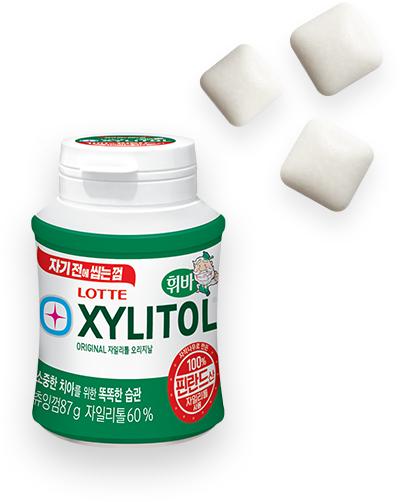
Everything you need to know about gum
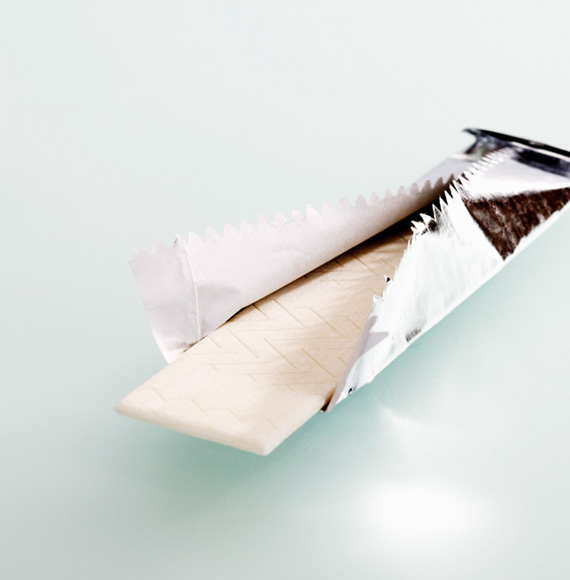
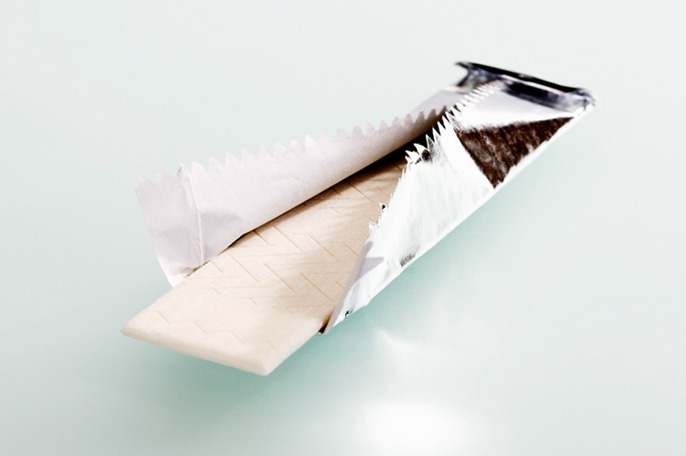
-
Why is the wrapper made of foil?
Gum base which is the main ingredient of gum, is highly sensitive to heat and humidity. It will turn soft if it gets too hot or humid. The foil is used to protect it from the elements. If gum is packaged in paper, the paper may stick to the softened gum in the hot and humid Korean summer.
-
How to get gum out of your hair or clothes
- 1. Rub the gum with liquid painkiller or bug spray, then scrape with the fingernails.
- 2. (To get gum out of clothes) Place a sheet of newspaper over the gum, then pass a hot iron over the newspaper to soften the gum and make it stick to the paper.
- 3. Use ice to chill the gum before scraping it out.
- 4. Apply hair mousse to the gum.
- 5. Rub soybean or another cooking oil onto the gum.
-
Why the comb pattern?
The comb pattern on your stick of gum is there so that the gum packing machine is able to properly grip the gum when pushing the gum into the palettes.
Also, having a pattern just looks a lot better.
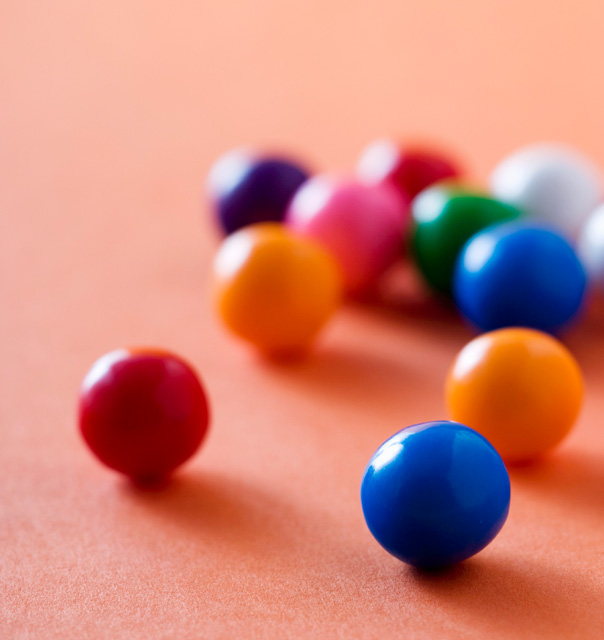
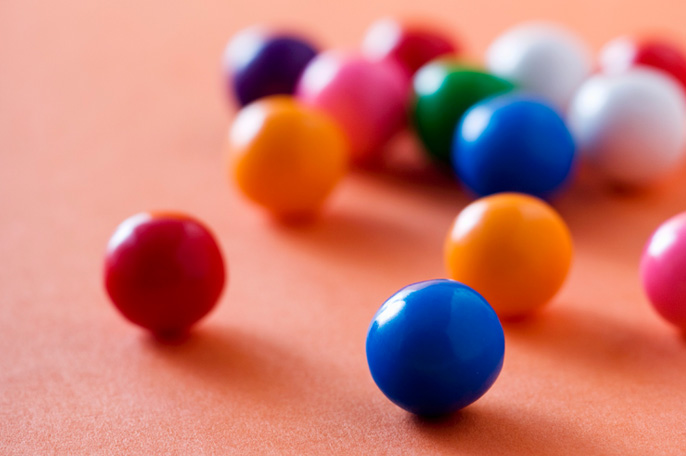
-
Is it true that eating peanuts while chewing gum makes the gum break down?
Yes, it’s true. Eating peanuts while chewing gum will make the gum break apart. The emulsifying components in peanut oil neutralize the adhesiveness of gum. This is why peanut oil is often used to remove gum.
-
What’s that black band along the outside of a gum wrapper?
Spread out a gum wrapper and you will see a black band along the edges.
The band is there to show the gum wrapper cutting machine where exactly to cut the paper.
Gum wrapper is made by cutting a large roll of foil into small pieces, and measuring out each wrapper before cutting is a time-consuming process.
By marking the roll with black lines and having a sensor detect the bands and automatically make the cuts, a lot of time can be saved. -
Why does drinking cold water make my gum turn hard?
Our bodies have a temperature of 36.5 degrees, and the inside of our mouths measures 34 degrees Celsius or higher.
The molecules in gum become exited as temperature rises, and the same is true of any other material.
When we chew gum, the warm, temperature in our mouth is what turns the gum soft and chewable.
Add cold water to the mix, and the water absorbs the heat from the gum as well as the inside of the mouth. The gum, now colder, contracts as the molecules inside lose their energy. You'll also notice that drinking warm water turns your gum soft.
